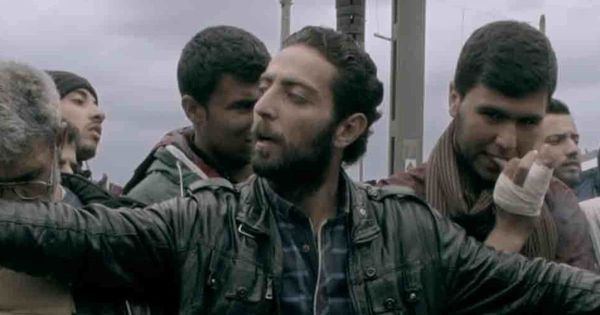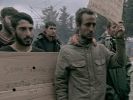Eye For Film >> Movies >> Spectres Are Haunting Europe (2016) Film Review
Spectres Are Haunting Europe
Reviewed by: Jennie Kermode

We all know that Greece is experiencing an influx of asylum seekers in numbers it has never seen before, but what does that look like on the ground? Following in the footsteps of observational documentaries like 2014's Maidan, and resembling a sequel to 2017 Oscar contender 4.1 Miles, Spectres Are Haunting Europe plunges us into the thick of the action and leaves us to try and make sense of it for ourselves - just as the migrants have to.
A series of static camera positions reveal the situation on the ground. People walk along a muddy road, more and more and more of them, carrying their few possessions, sometimes carrying their children. In the camp, an announcement blares out repeatedly, announcing the closure of the border between Greece and Macedonia, the West Balkan Route used by refugees for centuries. We will hear this again, at intervals, throughout the film. People mill about, uncertain what to do. Endless pairs of muddy jeans, jackets damp with rain, tired bodies. But there is laughter. Some of the adults talk optimistically about the fall of Bashar al Assad. Some joke to keep one another's spirits up. A lot of the children don't seem to grasp what is happening. Some cry, exhausted, and cling to their parents, but many are clearly still at the stage where they see this as a grand adventure. There's no school, they're in an exciting new location and there are lots of other kids to lay with. They run around, beam at the camera, make toys out of stones. It's this innocence in the face of disaster that is perhaps most painful to watch.

Inevitably, some of the adults talk politics, protesting at what they see as unfair and illegal treatment by Greece. It's not the Greeks, another says - the Greeks have done what they can, have sheltered and fed them, and the failing here is with Europe more widely. Some of the men hold up signs. One asserts that he would not make a stranger who needed his help wait even one day. Did some of those who say Europe is full once believe that? Another simply begs for permission to move on so that he can see his child.
Some shots are more informative than others. Inevitably, parts of the film drag, but perhaps that's necessary - it helps viewers understand a little more of what those in the camp are experiencing. At the end, the film shifts into black and white. It's a simple thing, but it has a remarkable effect. Suddenly, despite the modern clothes people are wearing, we see them as we have seen footage of those caught up in Europe's last great refugee crisis. The train tracks, the tents, the tired faces, strike familiar notes in our collective memory. It's another kind of understanding, another layer of reality. Although the poetic narration that suddenly appears to accompany this is rather leaden, making strong points in places only to dilute them with later rhetoric, the imagery is striking, and what is unspoken resonates loudly.
Reviewed on: 06 Feb 2017















